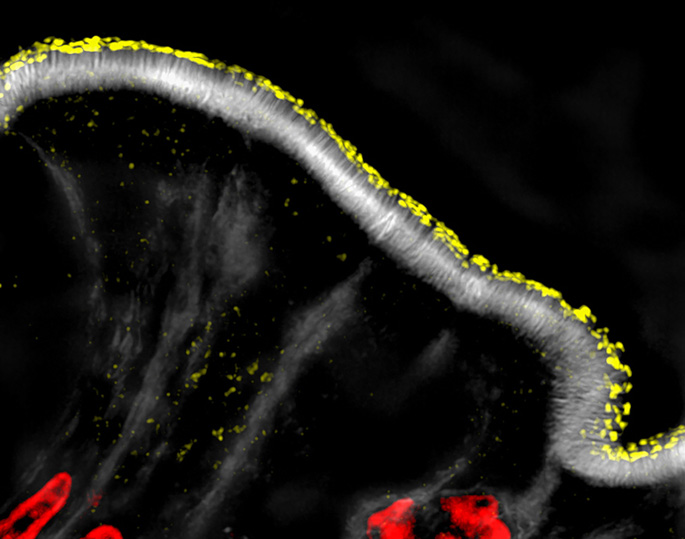by Leigh MacMillan

The epithelial cells that line the intestines build a specialized cell surface — the “brush border” — that processes and absorbs nutrients, and defends against pathogens. The brush border consists of thousands of finger-like membrane protrusions (microvilli) on each cell.
Matthew Tyska, PhD, and colleagues previously implicated the adhesion protein CDHR2 in the tight packing of microvilli on cultured cells. Now, they have generated mice lacking CDHR2 expression in the intestinal tract to explore the protein’s role in building brush borders in vivo.
They reported in Molecular Biology of the Cell that mice missing intestinal CDHR2 were smaller than control mice. Examination of the intestinal lining revealed that intestinal microvilli were significantly shorter, had disordered packing and had a 30 percent reduction in packing density. The structural changes were linked to reduced levels of key enzymes and transporters in the brush border, which potentially explains the reduced body weight.
The findings show that CDHR2 elongates and maximizes intestinal microvilli for peak functional capacity.
This research was supported by grants from the National Institutes of Health (DK111949, DK095811).












